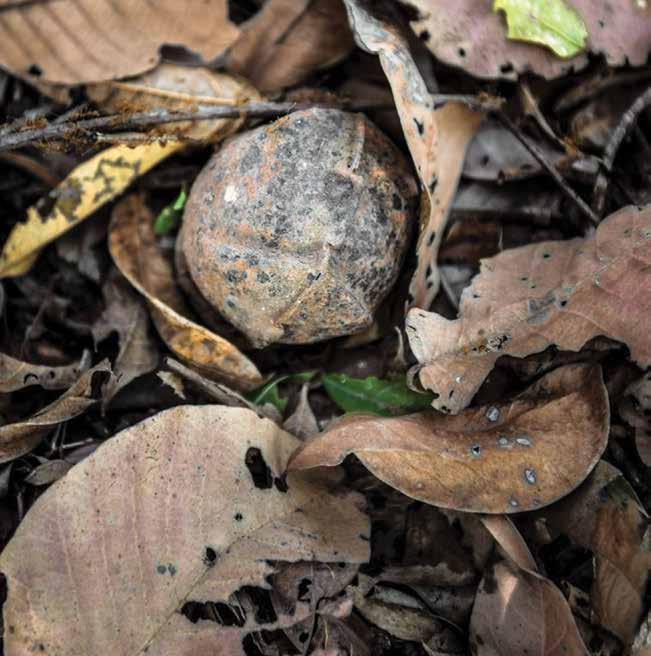The Journal of Conventional Weapons Destruction, Vol. 23, Iss. 3 [2020], Art. 1
Long-Term Risk Management Tools and Protocols for Residual Explosive Ordnance Mitigation:
A PRETEST IN VIETNAM by Katrin Stauffer [ RISKey GmbH ] and Christelle Mestre [ GICHD ]
T
he transition from proactive survey and clearance to reactive
responsible for mine action—the Vietnam National Mine Action
risk management represents a crucial moment in the life of a
Centre (VNMAC)—is left to determine a tolerable level of risk and
mine action program. Relevant frameworks and standards, in-
the appropriate point in time to change from a proactive survey and
cluding the International Mine Action Standard (IMAS) 07.10, usu-
In the framework of the MORE project, an initial methodology
of risk with regards to a mine or explosive ordnance (EO) threat is
was presented by the GICHD to VNMAC and relevant stakeholders.
achieved in order to move to a residual state. Such a transition re-
It was jointly refined over an eighteen-month process, during which
quires the application of risk management principles, as stressed in
VNMAC took a leading role in determining relevant instruments and
the IMAS 07.14: Risk Management in Mine Action.1
tools for its context. National ownership was a key principle of the
CONTEXT-SPECIFIC RISK MANAGEMENT METHODOLOGY
process to ensure that the results would benefit Vietnam. This approach allowed for greater engagement of relevant parties and proved crucial in contributing to the sustainability of the process.
Despite the existence of such frameworks, there is no universally
Under VNMAC’s leadership, the province of Quảng Trị was selected
accepted methodology that would help determine what the tolerable
for the pretest. It is known as the most heavily contaminated, yet one of
level of risk is and how to manage residual risk. In the framework
the most active and well-organized provinces with regards to mine ac-
of the Management of Residual Explosive Remnants of War (MORE)
tion activities. Many of its districts have undergone survey and clear-
project, coordinated by the Geneva International Centre for
ance, most of the population has benefitted from explosive ordnance
Humanitarian Demining (GICHD), a methodology has been devel-
risk education (EORE) activities, and high-quality data is available.
oped and piloted with the aim of enhancing national authorities’ ca-
These optimal preconditions led to the selection of Cam Lộ and Hải
pacities to identify, evaluate, and manage residual risk.
Lăng Districts for the pretest, which was conducted in May 2019.
Appreciating the context-specific nature of tolerable risk, defined as a “risk which is accepted in a given context based on current values of society,”2 the GICHD and risk-management consultant Katrin Stauffer developed a methodology whereby instruments and tools
ASSESSING AND MANAGING RESIDUAL RISK: METHODS AND FINDINGS
The pretest introduced the proposed risk management instru-
could be used according to the needs of a country or area facing such
ments and tools to the reality of operations in contaminated areas in
transition. The infancy of the methodology required it to be pretested
Quảng Trị, as well as local population’s reactions and beliefs regard-
in a country facing this challenge as a basis for further research and
ing EO threats. Instruments and tools used in the pretest formed part
future application.
of a holistic approach hereafter described as the long-term risk man-
LONG-TERM RISK MANAGEMENT IN VIETNAM
Vietnam’s highly EO-contaminated provinces have been pro-
actively surveyed and cleared at different levels, and in some locations the question of transitioning to a reactive risk management strategy in a residual state has begun to arise. As the country is not
18
clearance to a reactive risk management strategy.3
ally require that all reasonable effort is applied and a tolerable level
agement (LTRM) framework. The robustness of the methodology— adapted to the local context and based on extensive research and reliable data—proved crucial in building a credible process.4
IDENTIFYING THE TOLERABLE LEVEL OF RISK
The methodology relied on indicators to recognize a residual state.
a party of the Anti-Personnel Mine Ban Convention (APMBC) or
A location has not reached a residual state until achieving a set of
the Convention on Cluster Munitions (CCM), the national authority
indicators (according to the predetermined tolerable level of risk as
https://commons.lib.jmu.edu/cisr-journal/vol23/iss3/1
THE JOURNAL OF CONVENTIONAL WEAPONS DESTRUCTION
18













